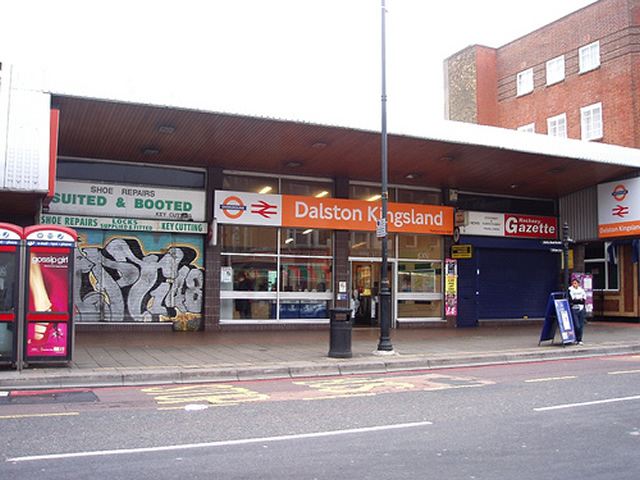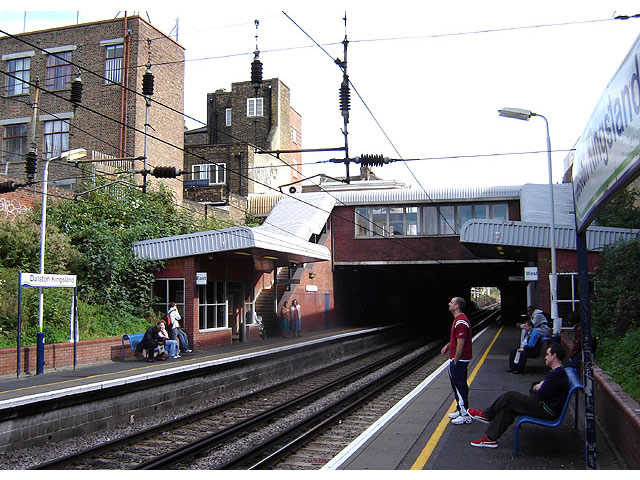A station was first opened on the site in 1850 by the North London Railway. It closed in 1865 when an extension was built to Broad Street in the City of London and a triangular junction was installed which joined the existing tracks to the east and west of the station. A new Dalston Junction station was opened at the southern tip of the junction and it replaced Kingsland station. The station was rebuilt and reopened on 16 May 1983 and it eventually replaced Dalston Junction when it closed in 1986, along with the rest of the line to Broad Street. The name Dalston is thought to have derived from Deorlaf's tun (farm) in much the same way as nearby Hoxton was named after the farm of "Hoch". The first written record available is from 1294 when the name was written as Derleston. The village was one of four small villages within the Parish of Hackney (along with Newington, Shacklewell, and Kingsland) that were grouped for assessment purposes, together having only as many houses as the village of Hackney. John Rocque's map of 1746 shows the village of Kingsland centred on the crossroads at what is now Dalston Junction and the small village of Dalston further east along Dalston Lane. Another clear feature is Roman Ermine Street which now forms most of the western boundary of this area. Ermine Street now has the road number A10 and goes by a number of names, including Kingsland Road as it travels through London. Around AD 1280 a leper hospital was founded in Dalston by the citizens of London and in AD 1549 it was attached to the chapel of St Bartholomew as an outhouse.
During the 18th and 19th centuries the area changed from an agricultural and rural landscape to urban one. By 1849, it was described as a recently increased suburban village, with some handsome old houses, and by 1859 the village had exceeded its neighbour and, with the railways and continuous building, the village of Kingsland disappeared. Dalston is known for music, events and its nightlife. It's biggest festival to date began in 2015, Dalston Music Festival. Centred on Gillett Square and 8 clubs in the surrounding area, it was founded by Andrew Bunsell of Dalston Studios. Dalston Junction re-opened on 27 April 2010 on the London Overground East London Line extension, with interchange permitted between it and Dalston Kingsland. As part of TfL's Overground improvement programme, plans have been approved to redevelop the station. Aside from increasing the number of entry and exit gates, the changes are largely cosmetic and do not make any provision for step-free access. Plans have been approved to redevelop the "Peacocks" building immediately adjacent to the station into a 15-storey tower block. At Dalston Kingsland station the NLL was powered by both 25kV overhead AC and 750 V third-rail DC systems and was the change-over point between current collection by pantographs and by shoes for passenger trains that are dual-system Class 378 electric multiple units (EMUs). For reliability, time-saving, and as part of the NLL upgrade, the third rail has now been removed and overhead cables power the North London Line between Stratford and Acton Central. The station is in Travelcard Zone 2 and has wi-fi, cash machines, and a waiting room but no toilets.
Connections: London Overground (East London Line) at Dalston Junction. London Buses routes 67, 76, 149, 243 and 488 and night route N76 serve the station.


